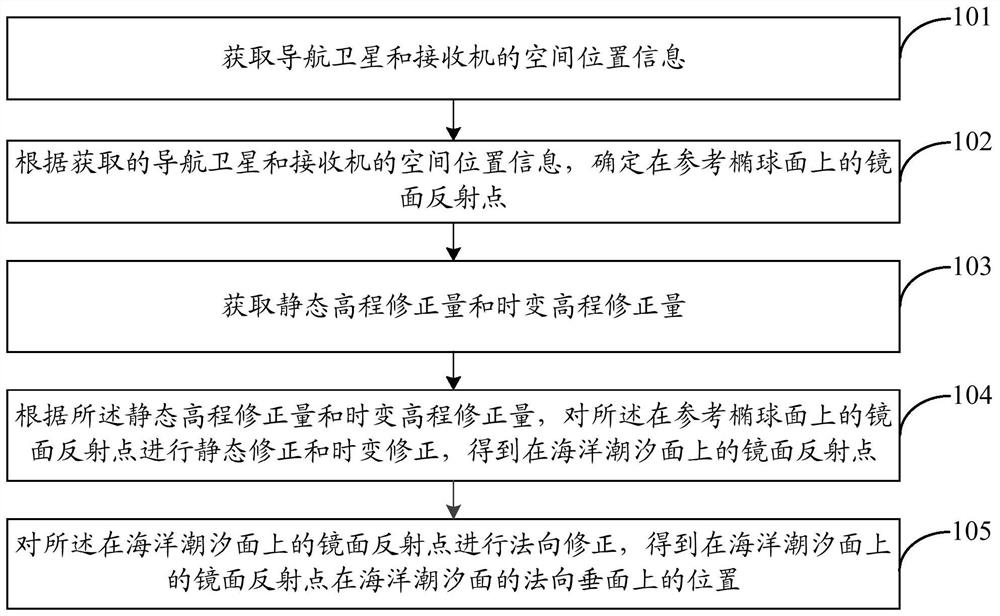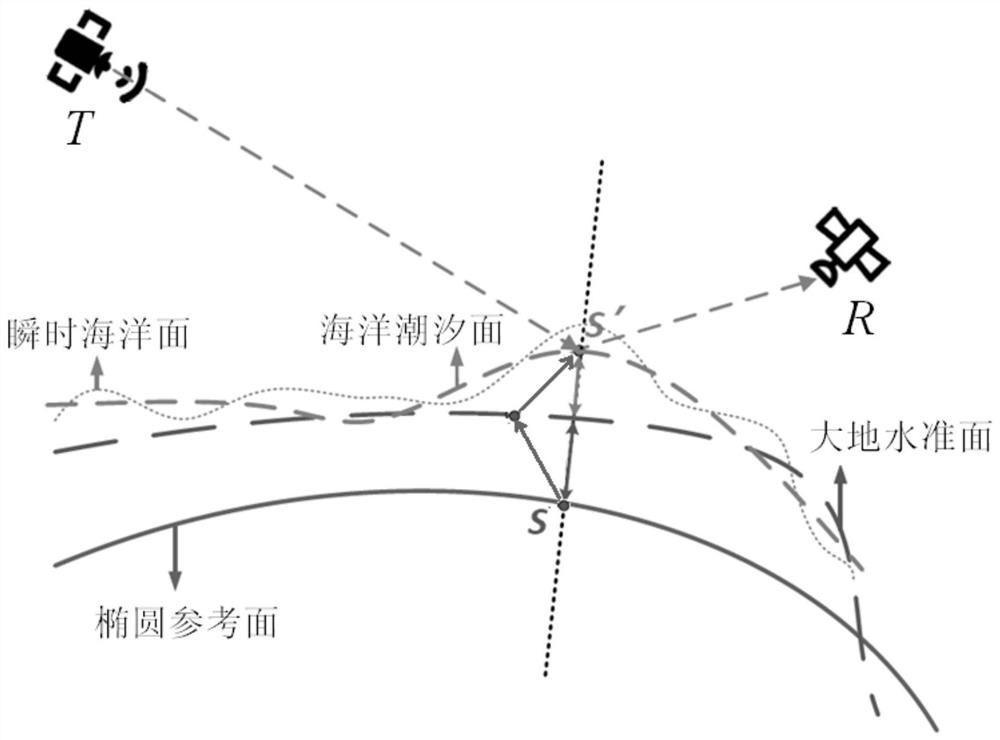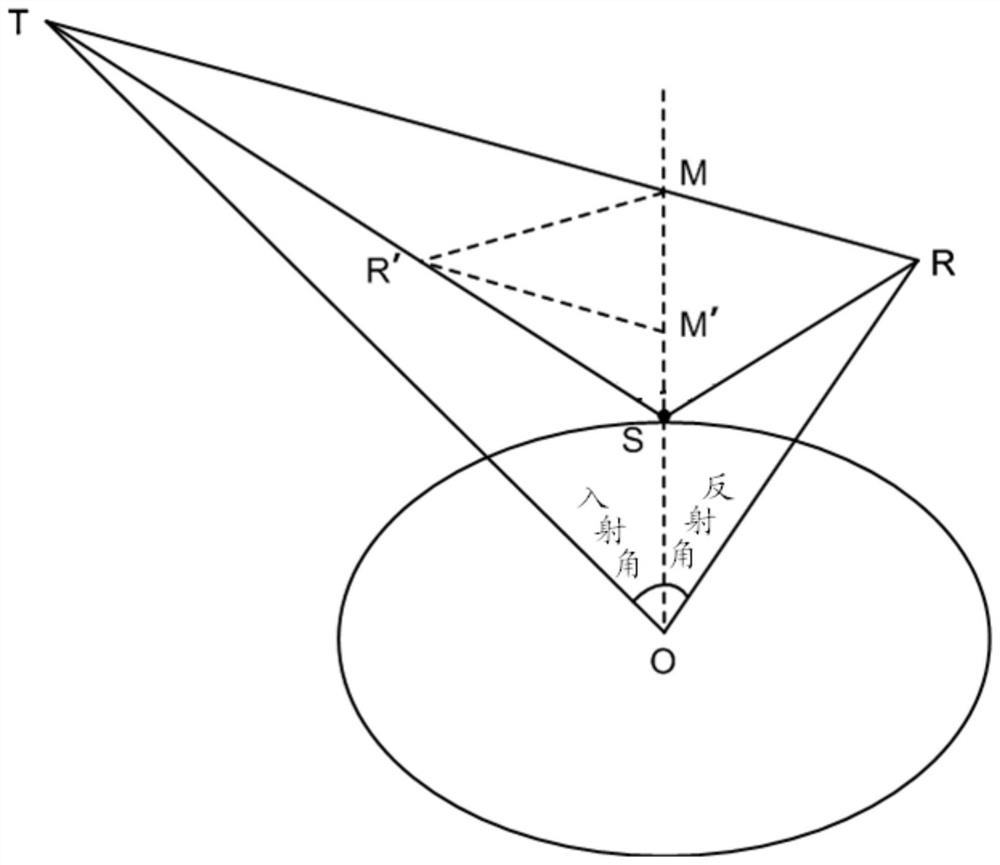Space-borne gnss-r mirror reflection point ocean tide correction positioning method and system
A specular reflection and positioning method technology, which is applied in the cross field, can solve the problems of not considering the difference between the ellipsoidal surface and the instantaneous sea surface elevation, and the large positioning error of the specular reflection point, so as to reduce the positioning error and improve the positioning accuracy.
- Summary
- Abstract
- Description
- Claims
- Application Information
AI Technical Summary
Problems solved by technology
Method used
Image
Examples
Embodiment Construction
[0060] In order to make the object, technical solution and advantages of the present invention clearer, the embodiments disclosed in the present invention will be further described in detail below in conjunction with the accompanying drawings.
[0061] like figure 1 , in this embodiment, the spaceborne GNSS-R specular reflection point ocean tide correction positioning method includes:
[0062] Step 101, acquiring spatial position information of navigation satellites and receivers.
[0063] Step 102: Determine the specular reflection point S on the reference ellipsoid according to the acquired spatial position information of the navigation satellite and the receiver.
[0064] In this example, if figure 2 and image 3 , according to the acquired spatial position information of the navigation satellite and the receiver, the position vectors of the navigation satellite T, the receiver R, and the mirror reflection point S on the reference ellipsoid can be expressed as: and ...
PUM
 Login to View More
Login to View More Abstract
Description
Claims
Application Information
 Login to View More
Login to View More - R&D
- Intellectual Property
- Life Sciences
- Materials
- Tech Scout
- Unparalleled Data Quality
- Higher Quality Content
- 60% Fewer Hallucinations
Browse by: Latest US Patents, China's latest patents, Technical Efficacy Thesaurus, Application Domain, Technology Topic, Popular Technical Reports.
© 2025 PatSnap. All rights reserved.Legal|Privacy policy|Modern Slavery Act Transparency Statement|Sitemap|About US| Contact US: help@patsnap.com



